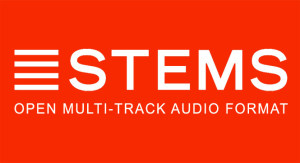In depth with… Native Instruments / Stems
Arriving from the creative minds at Native Instruments, STEMS is the freshest format within production and live performing. The multi channel audio file can now channel your in such format you can control each element individually. With the STEMs project now in full throttle, EQTV sits down and delves deeper into the tool and why it has garnered such support from the likes of Kerri Chandler, Luciano and Carl Craig.
STEMS has gained a lot of recognition this past week at Sonar with an incredibly positive industry response, how long has the process taken to launch fully and what were your initial expectations?
Developments for Stems actually began years ago with the original Remix Decks in TRAKTOR. Not only is Remix Decks a fun feature for DJs to use, it was also a technical milestone that showed we could play multiple audio files at once under DJ control…the foundation of Stems. What we didn’t expect was the extreme positive response from the industry. We knew there would be plenty of artists and record labels interested in this format, but we just didn’t expect it to be the extreme numbers we’re seeing now. So this already seems to be a great success…and the product isn’t even released yet!
You can create stem files pretty easily using the Creator tool, tell us more about that?
DJs normally play just one stereo file, but Stems allow them to play 4 simultaneously. So the artist needs to create these 4 parts from their song, and that’s the first step in creating a Stem file. Our Stem Creator tool is what takes those 4 files (and the original stereo file) and compacts them into a single Stem file which can then be played. The tool simply has 4 slots to load the stems, and a 5th slot to load the master. The real magic, however, comes from the Compressor and Limiter in the tool: this allows the user to apply final compression and limiting to the mix of the stems to give it a finalized sound. The same Compressor and Limiter settings are used during playback so the Stems also have the same finalized sound, even when the user is manipulating the mix. As a last step, you can include all the information about the song, like the Artist Name, Song Name, Album Name, Record Label, and so on…and even include the Cover Art! When you click “Export”, the tool collects everything and packages it into the .stem.mp4 file ready for use.
And the advantages when DJing, how does STEMs develop the track or mix even further?
The Stem file gives the DJ additional control over the music when performing his mix. Sometimes, when mixing two songs together, the drum parts of the two tracks might be too clamorous when playing simultaneously. With Stems, the DJ has the ability to pull down the volume of one of those drum parts during the mix so it doesn’t get too noisy or overloaded with drums. DJs can also do simple tricks like make instrumental or vocal-only versions of songs just by adjusting the mix of stems. But things get exciting when DJs start applying other DJ techniques to the stems, like isolating portions of one song and expertly layering them on top of others (such as layering a vocal from one song on top of another which didn’t have vocals). DJs can remix tracks by completely silencing certain stems and then playing new samples or loops of their own (like replacing the original drums or bass with new drums or bass samples). The wonderful thing is that, when presented in a DJ context, this kind of track remixing can actually be done “on-the-fly” live right in front of a crowd and doesn’t need to be done beforehand with specialized music editing tools.
In your panel debate, Carl Craig mentioned that music should not be free and that STEMS allows extra revenue for labels – right? Boosting visibility?
Indeed. The Stem format provides the user with more power and creative options, so selling Stems provides artists and labels with opportunities for more revenue by increasing the value of the music they make. And while the Stem format is still new, the early adopters of the format will gain increased visibility because they’re the “only names in the game”.
You have also been able to get huge artists such as your speakers last week re-releasing their existing music through the new STEMS output, was this something you envisaged?
Of course we always hoped that artists and labels would be able to re-release old classic tracks in this new format, because reusing pieces of these noticeable vocals, hooks, and riffs from the classics would be lots of fun in a DJ set. It would be a way for a DJ to make a live remix of an old track, possibly with a newer sounding rhythm section. That’s just the tip of the iceberg in terms of what sort of creative things DJs would be able to do when having access to old tracks in Stem format.
What are the next steps for Native Instruments with STEMS?
Right now our focus is on getting the word out about the benefit of STEMS to artists, labels, producers and developers and looking ahead to when STEMS goes live in a few weeks time. We have been really pleased with the general reception from the international music community and already have hundreds of labels on board including names such as; R&S, 50 Weapons, Get Physical, Monkeytown, Toolroom Records, Mobilee, Noir Music, Black Hole, Hotfush, Planet e, Cadenza, Madtech & Infine plus the support of global music retail brands such as Beatport, Traxsource and Juno. It really is a very exciting time for us and the music industry in general.
More information can be found here – https://www.native-instruments.com/en/specials/stems/








